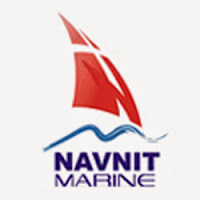Soon after a boat passes, its wake has vanished. But
as boaters we do impact the waters we love, and there are ways to keep
our “wakeprints” invisible. Anglers, it seems, have a special stake.
They have extra potential to have negative impacts through bait, gear
and fillet knives as well as a special interest in keeping waters and
their inhabitants healthy. But all boaters have both the opportunity and
the responsibility to leave their waterways and world as unsullied as
possible. Fortunately, it’s not as painful as it sounds. Often, going
green and boating in a thoughtful way makes it more pleasant, more
affordable and more fun. Start with these 11 tips:
1. Repel Invaders
Help keep invasive alien species — both plants and
animals — from spreading. Clean and dry your boat and trailer between
outings. Don’t move live fish from one body of water to another. Dispose
of bait properly — not in the lake.
2. Keep Your Head, Properly
Whether it’s an installed, plumbed head or a portable
potty, don’t shortcut the pump-out process. No head? Liners and seats
are available to turn a five-gallon pail into a “throne.” It’s not fancy
but it is functional and lake-friendly.
3. Clean Cleanly
Use environmentally friendly cleaners where possible —
white vinegar to kill mold, for example. Tough tasks may call for tough
tools, but always go as mild as the job allows.
4. Maintain Your Motor
Get regular tuneups, fix leaks and clean up spills.
That all minimizes the escape of fuel and lubricants and — as with many
green ideas — it saves you money too via lower operation and repair
costs.
5. Replace Your Engine
Aspirated two-stroke engines not only burn oil, they
let some of the oil/gas mixture escape between firings. Direct-injection
two-strokes and four-stroke engines operate much cleaner. As a result,
you might consider repowering a used boat.
6. Watch Your Wake
Besides irritating others, threatening damage to
other boats, and maybe even creating a hazard, waves can cause erosion
of fragile shorelines. When boating through delicate areas, take it
easy.
7. Talk Tackle
Fishing line and other lost tackle, including soft
baits that fish might eat, last virtually forever. Losses happen, but
don’t add to the situation by carelessly tossing overboard stuff you’re
done with.
8. Cut Commuter Carbon
Stay an extra night! You’ll feed the boat its daily
oats but drive time and cost will remain the same, yielding more boating
per highway mile and carbon footprint. Check trailer tire pressure, and
find the highway speed that burns the least fuel.
9. Harvest Deliberately
Nothing’s better than a mess of fresh-caught fish,
but think twice before taking a hefty harvest if the fillets are only
going to sulk in a freezer until defrost time. Catch and release? Do
both quickly, with a snapshot in between.
10. Learn the Rules
Nearly all boating and fishing rules are written not
to hassle us, but to keep us safe and protect the environment in which
we pursue our boating pleasure.
11. Goodbye, Old Paint
Anti-fouling coating is serious business on a boat,
but there are new water-based, environmentally friendlier ways to do it
with no odor, fumes or solvents. Clean up with soap and water, and watch
for similar advances in other boating supplies.
